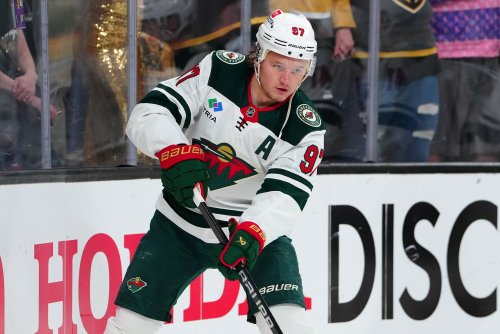
The Wild’s 2016-17 salary cap figure currently sits at $70,831,091, leaving $2,168,909 of cushion for Chuck Fletcher to utilize in signing additional NHL depth or making a move at the trade deadline. Many fans have been disappointed that Fletcher has been unable to complete a trade for a top center or legitimate scoring winger by taking advantage of the organization’s positional depth and trading from strength on the blue line. But, the salary cap has stood in the way of most of the deals the Wild have been in on. Several of the forwards the Wild have been reported to be interested in have fallen in the $6-7M category, with the Wild offering a defenseman back that is earning somewhere in the $4M range. That would require the Wild to have the flexibility to take on an extra $2M+ in salary, a luxury they have not been able to afford in recent years.
So with just a little bit over $2M available, it seems that Fletcher may have set himself up nicely to go out and make a move before the trade deadline. Besides acquiring that long sought-after player, it would also assure that the team is able to get fair value out of the defender they trade away instead of being forced to expose that player in the expansion draft. So it seems as though with the current cap situation, the Wild are set up well to have some flexibility when it comes to making a mid-season move that can help them now and in the future.
But a closer look at the roster starts to reveal some questions regarding who is currently on the roster, who is expected to be on the roster, and how much flexibility will remain once the roster is set. The Wild currently have 21 out of 23 roster slots filled with 12 forwards, 7 defensemen and 2 goalies. This is quite thin as this only leaves 1 extra defender and one healthy scratch to sit in the press box. Most teams will carry an extra forward, and the Wild usually do on road trips. The close proximity of the Iowa Wild makes it so easy for players to be quickly shuttled between the AHL and NHL that the Wild often choose not to carry a full roster on a home stand. This has become a trend across the league as NHL teams are consistently finding homes for their AHL affiliates that are closer than ever before.
The reason for this is that a team’s final cap hit is calculated by the dollars a team actually spends throughout the season, rather than just a summation of the players’ salary cap payrolls. Let me explain further. If the Wild’s base roster is 21 players as it is today, but they choose to add Alex Tuch to the roster for a long road trip to Western Canada. Tuch earns a pro-rated amount of his NHL salary for each day he is on the active roster (including non-game days) and his salary is added to the Wild’s annual cap hit for those days. When you look at Capfriendly or General Fanager, the cap number they offer is an approximation based on what the cap hit for the team would be if each player on the current roster was active for the entire season. Teams don’t publish their actual dollars spent, so an approximation is the best we can hope for. However, it does leave room for GM’s to be creative about how they spend each dollar by running a thin roster whenever possible to free a few extra dollars.
That being said, the current roster is not the roster that is likely to break camp, and there will be payroll implications for the projected changes. Zach Dalpe and Jordan Schroeder are on the roster. Their cap hits work well in favor of the Wild. Several other players who also have the door open to make the roster are not figured into the current salary numbers and could have a profound effect on the amount of space available. In fact, the most ideal situation in terms of prospect production would be the worst case for the salary cap.
In a scenario that could actually play itself out, let’s assume that Joel Eriksson-Ek and Alex Tuch both make the team out of training camp, and that the Wild would like to carry an extra forward. In this case, we’ll use Jordan Schroeder as the 13th forward and Dalpe is returned to Iowa. Following those moves, the Wild will only have a projected $949,742 left in cap space. That shrinks by another $200k if Christian Folin is traded and Mike Reilly is added to the roster. Ryan Carter making the team over Tuch or Eriksson-Ek will actually be a benefit as his likely salary is lower than either of the prospects.
The current roster projection isn’t what is likely to happen and the cap space the Wild have will likely shrink as they head into the season. We’ve seen in the past that Chuck Fletcher can be savvy with how he manages the roster on a day-to-day basis to retain a few more dollars to spend beyond the trade deadline. The question will linger throughout the year about whether he can be crafty enough to leave room to make a big trade if the opportunity arises.
Think you could write a story like this? Hockey Wilderness wants you to develop your voice, find an audience, and we'll pay you to do it. Just fill out this form.








Recommended Comments
There are no comments to display.
Join the conversation
You can post now and register later. If you have an account, sign in now to post with your account.
Note: Your post will require moderator approval before it will be visible.